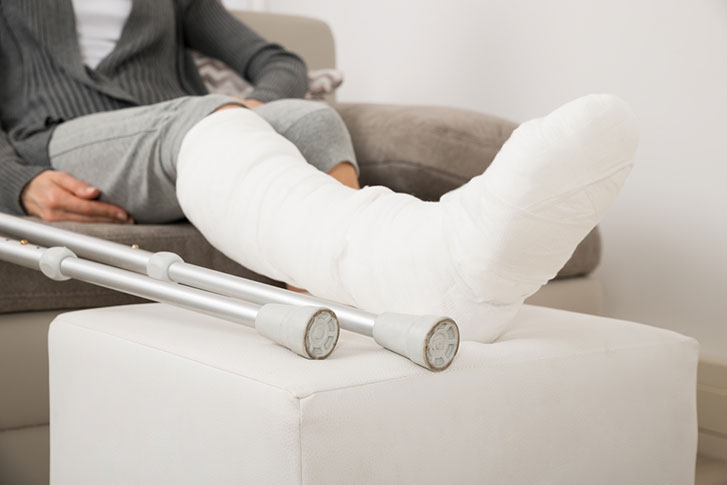By Christina Ballejos-Campos, PhD, RN; Andres Smith, MD; Pablo Velez, PhD, RN; Christine Basiliere, MSN, RN; and Sherri Navedo, MSN, RN
Sharp HealthCare of San Diego has been working toward an important goal: to provide all emergency department (ED) patients presenting with long bone fractures with appropriate pain medication within 30 minutes.
When Sharp surveyed EDs across its system, it found one that was already taking an innovative approach to the problem.
Since 2007, the Sharp Chula Vista Medical Center ED has operated under a unique protocol that allows triage nurses to order pain medication in cases of suspected long bone fracture. The order is based on the patient's pain score and ranges from Tylenol for mild pain to morphine for severe pain.
Hospital administrators, medical staff, and nursing staff recently collaborated on a research project to study the impact of the nurse-initiated protocol (along with other factors) on "time to pain management."
The following post is adapted from their poster presentation at Vituity's annual conference.
Introduction
Pain is the most common reason patients seek emergency services, making oligoanalgesia a common problem in EDs across the nation. The undertreatment or nontreatment of acute pain can lead to poor patient outcomes and decreased patient satisfaction.
Additionally, the Centers for Medicare and Medicaid Services (CMS) has recognized that early pain treatment for long bone fracture patients is imperative in reducing negative outcomes and increasing satisfaction.
Since 2012, measure OP-21 of CMS' Hospital Outpatient Quality Reporting (OQR) program has required EDs to report median "time-to-pain management" for patients with a primary diagnosis of long bone fracture.
As a result, Sharp identified timely pain management for long bone fracture patients as a system-wide priority. Sharp's goal for "time to pain management" was 30 minutes, which corresponded to the 90th percentile for hospitals nationwide.
Purpose
The purpose of the project was to measure mean "time to pain management" in ED patients presenting with long bone fracture, as defined by CMS.
Additionally, the project analyzed whether hospital-approved nurse-initiated pain orders and other variables such as pain score influenced performance on this metric.
Methods
The team used retrospective and observational studies to determine differences in the mean "time to pain management." The study included all patients presenting to the ED with a long-bone fracture between July and December 2012.
Mean "time to pain management" was selected as a method of measurement to allow for the inclusion of data outliers. By holding itself to this more rigorous standard, the team hoped to increase its likelihood of meeting the national benchmark (30 minutes median time).
Other variables collected included:
- Pain score
- Provider who ordered the pain medication (e.g. triage nurse, mid-level provider or physician)
- ESI
- Mode of arrival
- LOS
Results
During the study period, 144 patients presented to the ED with a long bone fracture. Of the 79 percent treated for pain (114/144), the mean "time to pain management" was 63 minutes (SD 62), with a median time of 33 minutes.
Variables such as severity of pain, ESI, mode of arrival, and LOS did not affect whether the patient was treated or whether they met the 30-minute "time to pain management" benchmark.
Interestingly, the team observed that the mean "time to pain management" was 30 minutes when medications were ordered by triage nurses vs. physicians (98 minutes) and advanced providers (69 minutes).
Conclusions
Allowing triage nurses to order pain medications in cases of suspected long-bone fracture significantly improves "time to pain management." More data is needed to determine the effects of this protocol on pain reduction and patient satisfaction.
Editor's Note
Since the original study, the ED team at Sharp Chula Vista has continued to track "time to pain management" for long bone fracture patients and refine its processes.
"One of the things we wanted to get out of this study was to ensure that every fracture patient was treated promptly — including those with suspected fractures," says Christina Ballejos-Campos, clinical nurse specialist.
"Now when a nurse sees a patient with a suspected fracture, the nurse immediately orders an X-ray, which automatically triggers our pain management protocol.
"We also work to keep our process consistent. The patient gets the same orders whether they're routed to a physician or an advanced provider. Those changes in practice have made a big difference in our metrics."
Bibliography
1.Campbell, P., Dennie, M., Dougherty, K., Iwaskiw, O., and Rollo, K. (2004). Implementation of an ED protocol for pain management at triage at a busy level I trauma center. Journal of Emergency Nursing, 30(5), 431-438.
2.Fosnocht, D. and Swanson, E. (2007). Use of triage pain protocol in the ED. American Journal of Emergency Medicine, 25(1), 791-793.
3.Fosnocht, D., Swanson, E., and Bossart, P. (2001). Patient expectations for pain medication delivery. American Journal of Emergency Medicine, 19(5), 399-402.
4.Goh, H., Choo, S., Lee, I, and Tham, K. (2007). Emergency department triage nurse initiated pain management. Hong Kong Journal of Emergency Medicine, 14(1), 16-21.
5.Minick, P., Clark, P., Dalton, J., Horne, E., Greene, D., and Brown, M. (2012). Long-bone fracture pain management in the emergency department. Journal of Emergency Nursing, 38(3) 211-217.
6.Retezar, R., Bessman, E., Ding, R., Zeger, S., and Mcarthy, M. (2011). The effect of triage diagnostic standing orders on emergency department treatment time. Annals of Emergency Medicine, 57(2), 89-99.
7.Seguin, D. (2004). A nurse-initiated pain management advanced triage protocol for ED patients with an extremity injury at a level I trauma center. Journal of Emergency Nursing, 30(4) 330-335.
Originally published Oct. 7, 2014. Updated April 9, 2018.























